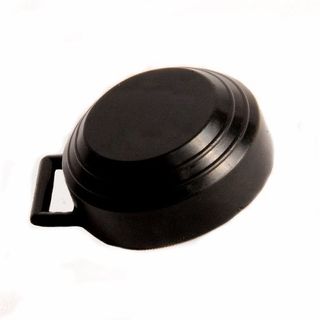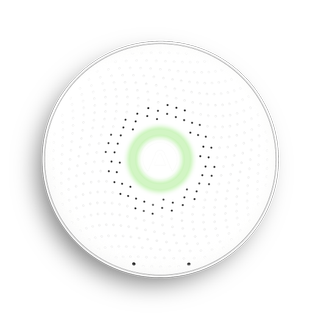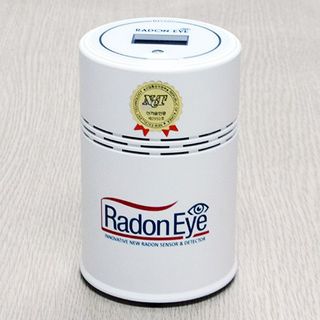How Smart Radon Detectors Measure and Monitor Air Safety

Radon is a radioactive gas that's invisible, unscented, and tasteless. It is created when uranium — which is found in almost all soil — decays over time. It's also incredibly harmful. Causing thousands of deaths each year, it's second only to smoking as the leading cause of lung cancer deaths in the United States. Same as the uranium that comes before it, radon can be found all over the U.S. and elsewhere. The EPA estimates nearly one in 15 homes have elevated radon levels. It gets into your home through wall cavities, cracks in your floors and walls, and potentially even your water supply.

Put simply, it's a serious concern that shouldn't be ignored. Luckily, it's easy to test for radon — in fact, you may have even come across a radon detector in your place of work or in a rental property. Detecting radon is the first step to limiting exposure. So how do radon detectors work? Well, it depends on the type of radon detector you buy. A passive radon detector (also called a test kit) is meant to sit in your home for a period of time, "collecting data" on your air quality. It's filled with a material sensitive to radon and — over time — reacts to the radon in your air to give you an idea of how much radon is present in your home. An active radon detector, on the other hand, isn't a single-use device that takes months to work. It uses a sensor that detects radon by looking for alpha particles in the air — radon emits alpha particles; the more alpha particles in the air, the higher the concentration of radon in your home. While a radon test kit can only give you peace of mind for a period of time, a radon detector can actively monitor your home, alerting you in the event that radon levels rise.
Once you're aware of the harmful gas, you can use several methods to reduce the radon level in your home. The EPA (U.S. Environmental Protection Agency) has a handy guide for reducing radon levels.
There are simple, battery-powered radon detectors that work a lot like carbon monoxide monitors and smoke detectors — they'll issue an alert tone or twenty upon detecting harmful levels of radon in your home. If you're in the market for something a little more futuristic, though, you might want to check out one of the smart radon detectors we've listed here. These devices are app-enabled, giving you a way to track and monitor your home's radon levels.
Airthings Wave

The Airthings Wave is a good-looking, Bluetooth-connected air quality sensor. Along with monitoring and tracking radon levels in your home, it can also keep an eye on temperature and humidity readings. Powered by two AA batteries, the Airthings Wave provides historical data of your environment in daily, monthly, and yearly increments. Using the free mobile app, you can keep an eye on all three of the sensor's readings.
My favorite feature, though, limits your need for accessing readings via the app. Activated by a wave of your hand (hence the name), a small glowing ring on the front of the device actually serves as an indicator for your air quality. Green means your air is healthy, yellow means levels are temporarily high, and red means there are unhealthy levels of radon in your air.
Airthings says you'll start to see your first results within an hour of installation. You can snag an Airthings Wave from Amazon for $199.
Master your iPhone in minutes
iMore offers spot-on advice and guidance from our team of experts, with decades of Apple device experience to lean on. Learn more with iMore!
Radon Eye Monitor

It's not nearly as pretty as its Airthings counterpart, but the Radon Eye RD200 monitor features many of the same features as the Wave. The highly sensitive, Bluetooth-enabled detector will begin to detect radon levels within the first hour of installation. Radon Eye says its detector is "about 20 - 30 times more sensitive than a conventional radon detector," giving you precise, accurate readings for peace of mind.
If you're looking for more specific values than "green, yellow, and red," you'll be happy to hear the Radon Eye also features a small display atop the device that gives you a read-out of the exact radon levels in the air. If you want historical data, you can use the app to keep track of readings over time.
The Radon Eye Monitor is available from Amazon for about $153.
Have you tested for radon?
Do you have a radon detector? Have you used a radon test kit? Is this — like me — all news to you? Gimme a shout in the comments or over on Twitter! I'm curious to hear about your solutions to the great big problem that is radon gas.
Mikah Sargent is Senior Editor at Mobile Nations. When he's not bothering his chihuahuas, Mikah spends entirely too much time and money on HomeKit products. You can follow him on Twitter at @mikahsargent if you're so inclined.
Most Popular






